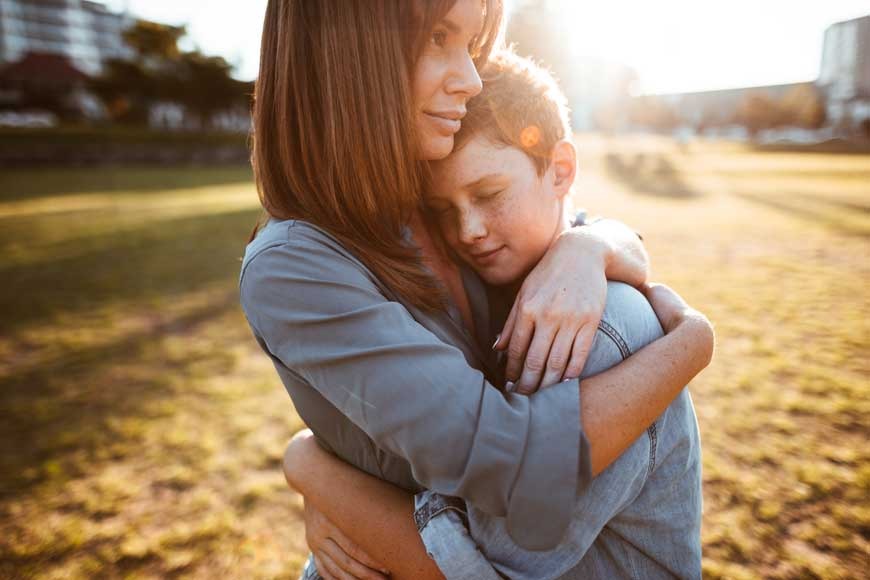Blue Whale Challenge: What It Is and How to Protect Your Children
Here's everything parents should know about the Blue Whale Challenge, with advice on how to protect your kids
17 July 2018
Clarice

In 2016 a new form of cyber-bullying appeared as the Blue Whale challenge came to light. Here, we take a look at what it is and what parents should know.
The Blue Whale challenge has claimed the lives of hundreds of children across the globe and has been banned in most, if not all countries. This new form of cyber-bullying is thought to be the cause of hundreds of suicides across the globe.
Some countries have been fortunate with the game not affecting their youth while others have not been that lucky. On Tuesday, July 23rd, 2018 Saudi Arabia reported the second suicide that can be attributed to the new online game. This time it claimed the life of a 12-year-old boy called Abdul Rahman.
SEE ALSO: How to protect your kids from cyber-bullying
News reports later shared that the suicide might not have been because of the Blue Whale game, but rather by another game called Magic Kingdoms. Whatever the reason behind the incident was, it remains important for parents to understand cyber-bullying, the dangers thereof and how to teach your children about online safety.
Here are some of the most frequently asked questions about Blue Whale:
What is the Blue Whale challenge?
The Blue Whale Challenge, also known as the Blue Whale suicide game, is a game that was developed by a Russian psychology student. The game has 50 levels with one level being completed per day. With each challenge the participant needs to complete a task that might seem harmless in the beginning, however, they quickly start turning into self-harm. Challenges in the game that participants need to complete include, among other things, to break something, not talk to anyone for a day and to watch horror or psychedelic movies alone at night. On the 50th challenge, the participant is required to take his own life in order to 'win' the game.
How does Blue Whale work?
Teenagers and children who seem to be suffering from depression are targeted in online chat rooms and invited to play the game. In an interview with the creator of the game, Philipp Budeikin, admitted to creating social media accounts with depressive content in order to set the mood before luring children and teenagers into private online chatrooms from where they are invited to play the game.
Once they have joined the game, participants are assigned a curator who demands the participant to perform a specific task every day over the course of 50 days. Before they start, participants are warned that they cannot leave the game once they’ve started. Personal information about the participant is collected once they have agreed to participate and then the challenge begins. Participants are threatened, blackmailed and cyberbullied if they try to stop the challenge. Some players who wanted to quit reported that they and their families were threatened by the administrators.

Each challenge becomes more sinister than the previous and proof needs to be sent to the curator every day to show that the tasks were completed. The last challenge is for participants to kill themselves.
You might ask yourself how can someone fall into a trap like that?
Some articles have gone as far as to say that children are being ‘brainwashed’ through the game. There are self-harm tasks such as cutting themselves, isolation tasks such as not talking to anyone for a day and tasks that affect their psyche such as watching horror and psychedelic movies alone in a dark room and waking up at 4:20 am to watch psychedelic and scary videos.
This breaks the children down both mentally and exhausts them emotionally leaving them confused and even more depressed at the end of the 50-day challenge. Every challenge is to help prepare the children to commit suicide.
When and where was the first suicide case of Blue Whale reported?
The Blue Whale suicide game originated in Russia with an article about the challenge first appearing in a Russian newspaper back in May 2016. The game quickly spread across the globe and is suspected to be responsible for at least 130 suicides in Russia. Suspected cases have also been reported from America, India, South Africa, Europe, Dubai and Saudi Arabia. More recently India has fallen victim to the game with an influx of suicides occurring in the country and being suspected to be linked to the online challenge.
It is, however, very difficult to prove that these suicides are related to the Blue Whale challenge/ as there isn’t enough evidence to prove that the victims were enticed into killing themselves. It is rumoured that victims are instructed to delete and/or destroy any evidence that they were a part of the challenge before committing suicide.
Does the Blue Whale game have any other names?
Even though the Blue whale challenge is best known as the Blue Whale suicide game or Blue whale challenge, it does actually have more than one name. Numerous copycats started engaging in the game and over time the 'game' has developed a number of different names. The names that we are aware of that children should be on the lookout for are:
- A Blue Whale
- A Quiet House
- A Silent House
- A Sea of Whales
- Wake Me Up at 4:20am
You might also be interested in...
What can parents do to prevent their children from participating in the game?
There are a number of things that parents can do to protect their children and keep them away from Blue Whale predators. Of course there isn’t a set list of things that will ensure that your child remains safe, but doing these things will help reduce the risk:
- First things first, it is important to build a strong and open relationship with your child. Create a safe environment for them where they can confide in you about anything that is bothering them.
- Inform your child about the game and talk to them about the dangers of engaging in it.
- Ensure that your child visits age appropriate websites that do not promote any form of unethical behaviour or violence
- Your child should only be able to access the internet from a computer that is placed in a family space
- Monitor what your child is engaging with and following on social media
- Use parental controls on all the devices that your child uses and monitor their screen time
- Be a role model to your child and monitor and limit your own time that you spend online.
- Stop your child from accessing the internet immediately and consult the police if you discover that your child is already busy playing the Blue Whale challenge.
- Encourage outdoor activities to help get your children away from technology and spend some time in the fresh air.
- Teach your children about internet safety and not to share any personal information online.
- Teach your children that stranger danger is the same online as it is offline.

What age is the most at risk of being targeted for the game?
Tweens and teens are especially targeted to play the game. The ages 12-19 years are the most vulnerable to be targeted on social media groups. It is advised to keep an extra eye on their online activities and what groups they are participating in.
Child psychologists advised that some of the signs to look out for in children are:
- Isolating themselves and stop interacting with families and friends
- Start talking about running away and death
- Change in sleeping and eating habits
- Listening to psychedelic music
- Suddenly start watching horror and psychedelic movies
Children who show any of these signs should be given special attention to ensure that they don’t harm themselves.

What are the signs that your child is playing Blue Whale?
Very few people know your child as good as you do and if you have a very close relationship with your child, it will be easy for you to notice if they present an attitude or behaviour changes. It is important to pay close attention to the behaviour of your child. The following things might be a warning sign for you to take note of:
- Seeing cuts or bandages on their body. This can also be indicated by a sudden change in their wardrobe i.e. suddenly starting to wear long sleeved shirts in the middle of summer.
- A change in their sleeping behaviour such as waking up early.
- Isolating themselves and stop interacting with families and friends
- Start showing a disinterest in their normal activities
- They start listening to psychedelic music
- They start watching horror and psychedelic movies when they usually didn’t
What to do if you suspect that your child is playing Blue Whale?
If you suspect or realise that your child is participating in the Blue Whale challenge, it is important to revoke their internet access in order to ensure their safety. This first step is to stop the curator from contacting them.
Your child might already be depressed, suicidal or in a negative frame of mind so be careful not to scold them and push them further away, but rather create a safe environment and provide a support structure for them. It is also important to get them professional help such as a child psychiatrist who is trained to help them deal with depression and suicidal thoughts.
It is important to reach out to your local authorities if you or your child is being threatened after they have stopped participating in the challenge. Foundations such as the Cybersmile Foundation also help in assisting people who are being bullied or harassed online. Reaching out to one of these organisations will also help you and your family in dealing with the cyberbullies.

























.png?itok=SvZPqMHH)




.png?itok=uB2ieOR7)












